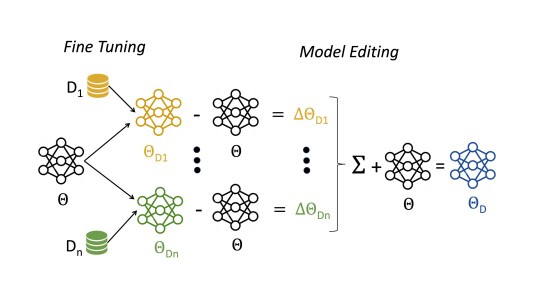Notebook computers, tablets, and smartphones get the tech headlines, but these are largely mature products at this point. Smaller, more personal devices are going through a torrent of iteration and innovation.
Bluetooth wireless headphones are a highly competitive category, with products with bare-bones features available for less than $50, and feature-packed devices available at prices ranging all the way up to $400.
The first Amazon Echo Buds appeared in 2019, and, the follow-up second-gen Echo Buds in April 2021. The team at Amazon improved the second-gen earbuds in almost every way. This is a behind-the-scenes look at the unique challenges the engineering teams faced in creating the latest generation Echo Buds, and how they used scientific research to drive fundamental innovation to overcome those challenges.
Ultimately, Amazon’s team was able to a deliver feature-rich product that competes with products at the high end of the price range for $120.
Atif Noori was the principal product manager for both generations of Echo Buds. Reflecting Amazon’s customer focus, he said the process of designing the latest Echo Buds began with understanding the desires of the customer.
“We work backwards from the customers and build out a set of product requirements. From there we work across multiple talented teams to deliver a lovable product,” he said.
What customers want is great audio, a comfortable fit, long battery life, and excellent connectivity with their smartphones. Of course, many of these are in tension with one another. At the high end of the hearables category, customers also want advanced features like noise cancellation and cloud-based voice services like Alexa.

Given this catalog of customer expectations, the nugget-sized wireless earbuds are giants of engineering challenges.
Reducing size to improve comfort and fit, while still maintaining connectivity performance, staying under comfortable temperatures limits, and meeting the customer’s battery life expectations with more features, was a challenge, but one the engineering team said they were excited to tackle.
Milos Jorgovanovic, principal system architect at Amazon Lab 126, says size and cost are the constant constraints. The Amazon engineers were able to produce a device that is 21 percent smaller than the first version Echo Buds, while maintaining costs, through a multitude of innovations and integration of components.
This began with the processors, or, to use the engineers’ lingo, the silicon, which are the heart of the device. To make the device smaller, the engineers needed to reduce the size of the battery. Easily enough done on its own, except the team also needed to do this without reducing the device's battery life.
"And really for that, the key piece is the power consumption of the silicon platform itself," Jorgovanovic said. "At the same time, we are basically trying to offer high-end features at a much lower power consumption and lower cost."
For the second-generation Echo Buds, team worked with manufacturers to redesign the main Bluetooth chip and the audio co-processor in such a way that those two components could perform the tasks of five different components found in the first-generation device.
"We basically cut the power consumption for audio and Alexa processing by at least a factor of two from what it was before," Jorgovanovic said.
We basically cut the power consumption for audio and Alexa processing by at least a factor of two from what it was before.
This was done while simultaneously improving the Alexa’s ability to hear customers speak.
Amazon started the voice category with the original Echo and Alexa launch in November 2014, so it makes sense that the latest Echo Buds would offer seamless Alexa functionality. With Alexa, a user can not only play music and make phone calls, but also set reminders, request information, and in certain cities, plan public transportation routes and get information on the train or bus they're hoping to catch, all while leaving their phone in their pocket.
"If a customer wants to take Alexa on the go, they can do that and have the same experience as they do with an Echo in their home," Noori said. "It's even more than that though. The responses are tailored for when you're on the go. For example, you can ask Alexa to remind you to buy tahini when you arrive at Whole Foods. And in some stores, you can then ask Alexa if tahini is in stock, or ask which aisle the tahini is on, which is pretty awesome.”
Achieving all of that requires not only integration with the cloud, but also a good bit of on-device processing. Jorgovanovic said improvements in the new processor allowed this to be done with less power consumption.
"We put a better digital signal processor in there, but the second, and more important piece, is that this chip was designed so that it allows very aggressive frequency and voltage scaling," he said. "What it means is that if the device is basically sitting in the air, doing very little processing, we are able to lower both the frequency and the voltage on that chip and have the chip consume much less energy."
If the user speaks and, for example, asks a friend, "Hey, Jason, how are you doing?" the device will run a small amount of processing to determine if the user said "Alexa." If the user did say "Alexa," the digital signal processor (DSP) is boosted even further, increasing the voltage, boosting the frequency, and engaging in more complex compute. At that point the device is processing the Alexa event — the information is sent to the cloud and then the response is played when it is received.
"We basically have these levels of processing, and we set the frequency and the voltage on the processor to the adequate level for the amount of processing we need. This is one of the two main things that we've done in gen two to scale down the power consumption,” Jorgovanovic explained. “The second big thing was integrating more functionality into the main Bluetooth SoC [system on a chip] by innovating on the Bluetooth protocol between the two earbuds, which reduced the number of components and power spent on interconnect. Overall, we reduced total device power by more than 35 percent relative to the first Echo Buds, and specific to that DSP processing for audio and Alexa, by at least a factor of two, if not more. And that's just, wow."
Reducing the power of the processors brought another benefit: reduced heat. "Because we pack in so much, we have to factor in heat dissipation," Noori said. "It was not like you can add on cooling fins or a big heat sink. It required careful simulation and design."
Beyond the silicon, another major constraint in size and cost are the antennas.
Connectivity is a hurdle in wireless Bluetooth headphones because they are partially hidden in the ear. And while ears can block frequencies, the human body is also effective at blocking signals. The user's smartphone needs to connect with one of the earbuds, and then the two earbuds need to send packets to each other, with as little latency as possible.
"That's really important — the synchronization of the two ear buds — because our hearing is very sensitive to this," Jorgovanovic said. "Something like a hundred microseconds of delta between left and right can easily be felt. And, the effect is the user will sense that the audio is not coming from straight ahead, but instead coming from one side or the other."
Balamurugan Shanmugam, senior antenna design engineer, says the connectivity issues are a challenge for all wearable devices.
"This is an inherent physics problem, right? I mean, this is not unique to Amazon. Anyone working on body-worn devices or even looking just at medical devices such as wireless-enabled pacemakers will encounter the same problem," he said.
Shanmugam's challenge was to improve connectivity in a smaller package. His team's first go at the problem developed a solution, but the manufacturing costs were too high. It was time to develop a novel solution.
Just as the engineers were able to reduce the number of processors in the device, they also were able to integrate functions to accommodate a new antenna. The best location for the antenna is in the front center of the device, but that is also where a user expects to tap or use gestures. On the first-generation Echo Bud, the touch sensor and electrostatic discharge (ESD) circuits were utilizing the location an antenna needs to maximize wireless performance. To address that, the engineers invented an integrated antenna design that combines the antenna, touch, and ESD subsystems.
"The newest Echo Bud has integrated antenna, touch, and electrostatic discharge to optimize wireless performance," Shanmugam said.
Noori said that connectivity is among the features that stand out in the latest Echo Buds. "Connectivity is very solid on these devices; I'm definitely proud of the connectivity performance. I think we nailed that."
And there’s more to come.
"I think there's a lot of interesting things that can be done with earbuds that are outside of basic music playback," Noori said. "We’re continuing to innovate on behalf of our customers, and pushing out software updates. Echo Buds will continue to get better and smarter over time."





